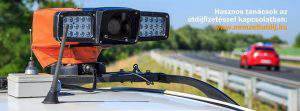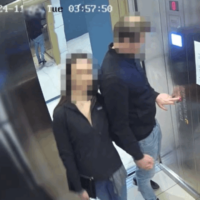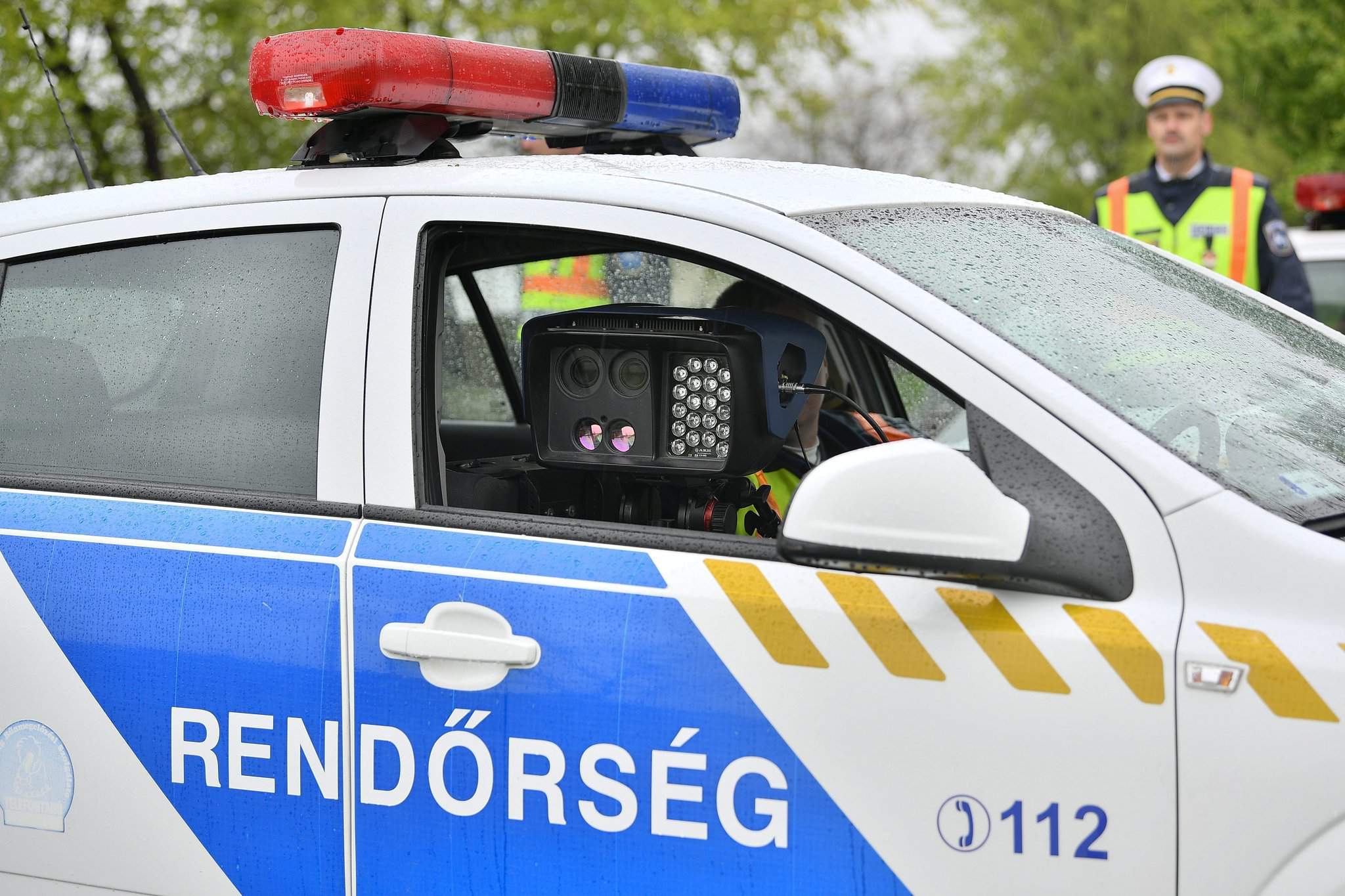Record-holder on Hungarian freeways with 287 fees
Püspökladány, 2017. április 19. Jármûvek sebességét mérik rendõrök Püspökladányban 2017. április 19-én reggel. Az Európai Közlekedésrendészeti Szervek Hálózata (TISPOL) kezdeményezésére meghirdetett sebességellenõrzést az idõjárási körülményekre tekintettel a rendõrség felfüggesztette. Az ország középsõ és keleti felében a jelentõs mennyiségû esõ miatt van érvényben hat megyében másodfokú figyelmeztetés. A Dunántúlon már több járásra másodfokú riasztást adtak ki a viharos szél veszélye miatt. MTI Fotó: Czeglédi Zsolt
Vezess.hu writes that a foreign man was caught more than 287 times in 2016, but since he can only receive one surcharge of 14,875 forints (~EUR 48) a day, he “only” accumulated 287 cheques. Unfortunately, Hungarians also received a record amount of surcharges – 731 thousand all together – for the free use of toll-roads.
A lot of records were set on toll-roads in 2016. Almost 13 million e-stickers were bought by drivers, while intentional violators or forgetful drivers received 731 thousand cheques, which is a record number. Those who bought stickers contributed to the state budget with 60 billion forints (~EUR 193m), while those who were fined paid 5.8 billion (~EUR 19m), which are both records.
Out of the fined drivers, many doubted the surcharge and thus didn’t pay it. There’s no exact data about cases waiting to be considered or sued cases, but if we multiply 731 thousand with 14,875, which is the sum of the surcharge, we get 10.7 billion forints (~EUR 34m) without long prices.
There are notorious violators: the recorder of 2016 is “a foreigner living in the agglomeration of Budapest, who’s been using the Hungarian road network without paying a penny as a life-style with his average estate wagon. He became the recorder of 2016 with 287 surcharges, thus repeating his victory from the previous year” said Szabolcs Török, the spokesperson of the National Toll Payment Services (NÚSZ).
However, the concerned driver was caught more than 287 times last year, but according to the law, he can only get one surcharge a day. The cameras of the National Toll Payment Services capture his violations every day in vain, because they can’t get him to pay the extreme fare due to his officially non-existing license plate number.

Photo: www.facebook.com/NemzetiÚtdíjfizetésiSzolgáltatóZrt.
How are 731 thousand fares possible?
In 2014, NÚSZ sent out 276 thousand cheques, 516 thousand in 2015, compared to which the rate has grown by 42% in the last year. Executive director Tibor Börzsei said that the control was the strictest this year, they controlled drivers 303 million times all together. This number was 208 million in 2015 and 133 million in 2014.
He believes that the increase was due to the integration of the e-sticker and e-toll system two years ago, while it was affected by the mounting of new control points last year. The company runs 110 fix control points all together, out of which 61 are responsible for the checking of e-stickers, 49 check trucks on minor roads, while they also check upon vehicles with 45 cars.
Who gets fined and why?
The answer can be divided into 2+1 big groups. In half of the cases, the driver doesn’t buy a sticker at all, while 21% buy it too late. The rate of foreigners is high among intentional violators, especially when it comes to Germans and Slovakians.
The third group gathers those who mistake their license plate numbers, which can be corrected for 1,470 forints (~EUR 5). Others mistake the fee category of their car. Last yeary 103 thousand people fell into the trap, which is a decrease compared to 2015, but is still too much.

Photo: www.facebook.com/NemzetiÚtdíjfizetésiSzolgáltatóZrt.
Which are the most fined regions?
It’s probably no surprise that the most frequented M1 freeway is in the lead (157 thousand charges in 2016), followed by M7 (132 thousand) and M0 (122 thousand).
If we compare the number of surcharges with the length of the given roads, M0 stands out. Every kilometre gets 7,631 fares, opposing to M4’s 1,159 and M85’s 1,032. The reason behind M0’s winning position is probably the number of new control points mounted in 2016, which highly increased the number of check-ups.
On the other hand, the number of drivers not paying the fees is also exceptionally high due to two reasons. Firstly, the control wasn’t so regular at M0 previously. Secondly, the beltway between M5, M4, M3 and the Megyeri Bridge can only be used with e-stickers. This is signalled on boards everywhere.
Regarding the control technique, even though NÚSZ says that the number of violators hasn’t increased, they will install new camera-gates before the hybridisation of the vehicle fleet. The reason is as plain as daylight: the state realises that more cameras equal more income, so they want NÚSZ to produce billions.
Ce: bm
Source: http://www.vezess.hu/
please make a donation here
Hot news
Hungarian forint hits new 2-year low against the euro, attempts to recover
BREAKING! Travel chaos as trains come to a standstill at major Budapest railway station
Historic moment: permanent Puskás Museum opens its doors in Budapest – PHOTOS
Council approves 2025 EU budget
Survey: Fidesz retains lead in polls
VIDEO: ‘Now You See Me 3’ cast and crew say goodbye to Budapest




